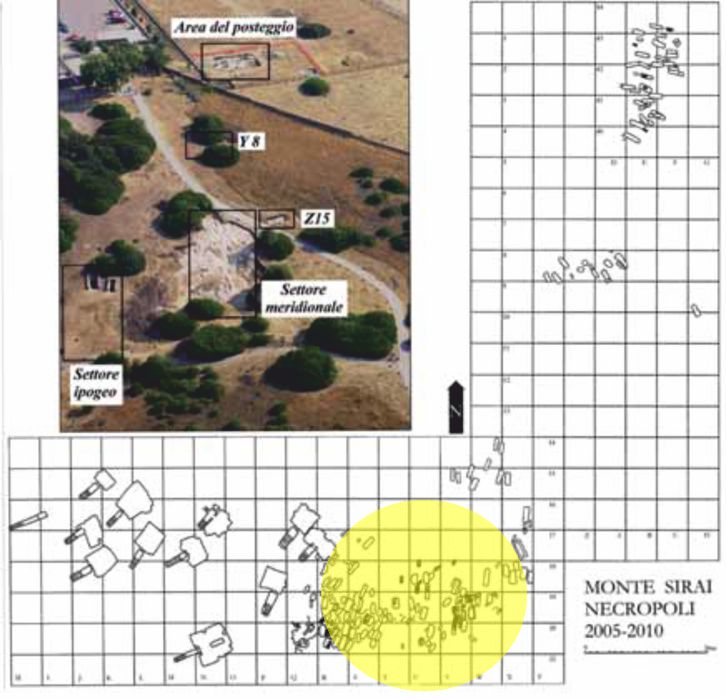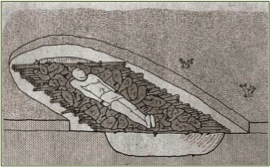Phoenician necropolis with pit tombs
The Phoenician necropolis, dated between the end of the 7th and the late 6th century B.C., is the oldest non-native cemetery documented in Monte Sirai.


Cremation, or incineration, was the most popular ritual in Phoenician culture. Interment was also used, that seems to indicate an origin or culture more specifically linked to Carthage. This is therefore a necropolis that registers the Phoenician phase and shows a Carthaginian part that becomes dominant on conquering the previous Phoenician settlement, not without hard conflict.
The necropolis is east of the chamber tombs (family tombs that the Carthaginians arranged around the area of the Phoenician tombs, partly occupying it too). One of the most widely used funeral modes was cremation in the pit, by preparing a pile of wood and branches for a funeral pyre and then covering of the burnt remains accompanied by their personal objects.


The presence of the native tradition is interesting. Integration between groups with Nuragic traditions and the new Phoenician populations can be seen in Monte Sirai, as well as in the nearby Sirai nuraghe and other areas of Sardinia.
Bibliografia
- P. BARTOLONI, La necropoli di Monte Sirai - I (Collezione di Studi Fenici, 41), Roma.
- P. BARTOLONI, Monte Sirai, Sassari.
- M. BOTTO, L. SALVADEI, Indagini alla necropoli arcaica di Monte Sirai. Relazione preliminare sulla campagna di scavi del 2002, in RStudFen, 33, pp. 81-167.
- M. GUIRGUIS, Monte Sirai 1963-2013 mezzo secolo di indagini archeologiche, Sassari.
- M. BOTTO, Fenici e indigeni nella necropoli arcaica di Monte Sirai: nuove evidenze, in Ana Margarida Arruda (Ed.), Fenícios e Púnicos, por terra e mar (Actas do VI Congresso Internacional de Estudos Fenícios e Púnicos, Volume 2), Lisboa, pp. 1132-1145.

 VR
VR